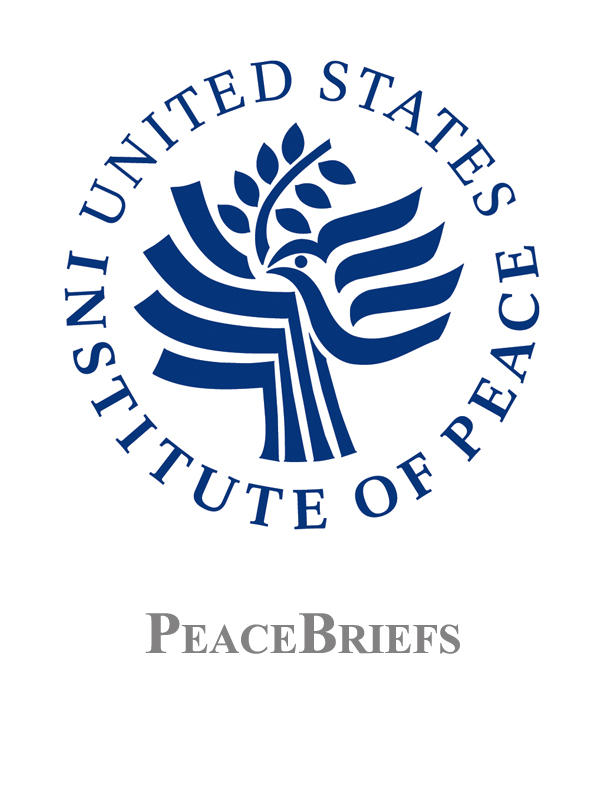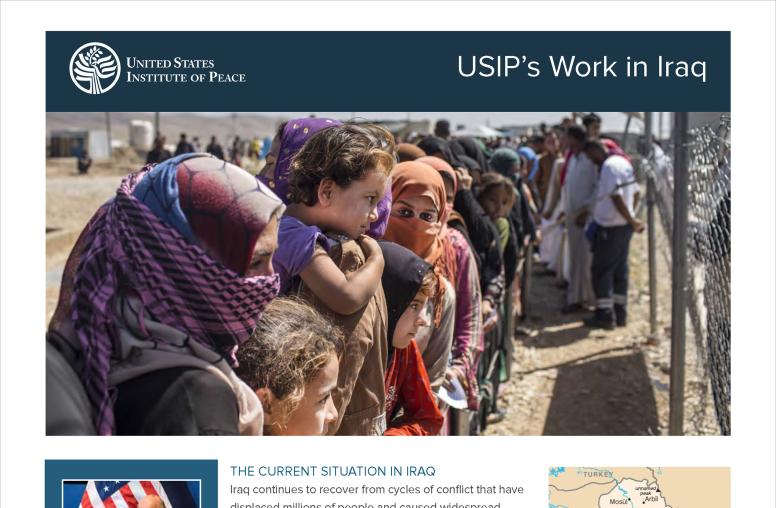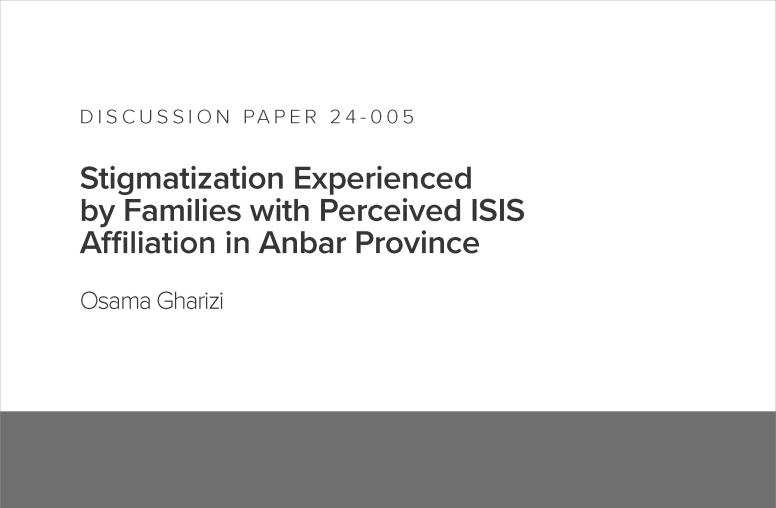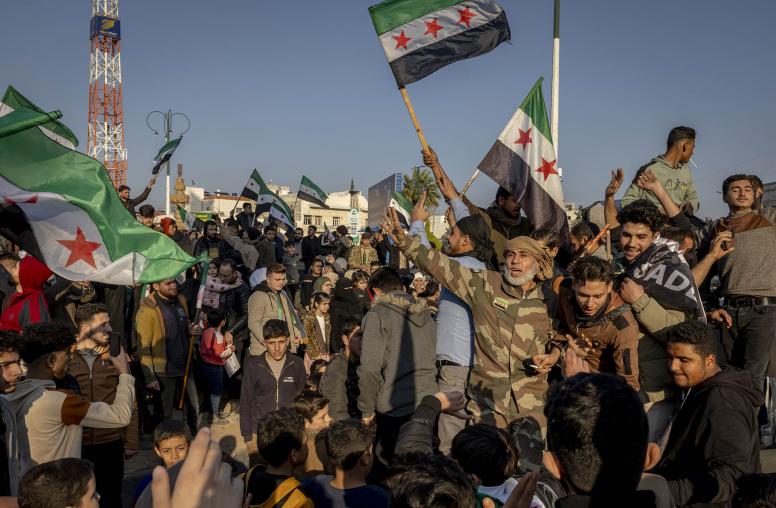Marshland Arabs of Iraq
The near total destruction of the vast marshlands of southern Iraq by Saddam Hussein's regime has had significant ecological consequences and devastated the 500,000 Ma'dan or "Marsh Arab" people, who have populated the area for 5,000 years.

On November 14, the Institute hosted a Current Issues Briefing to examine the effect of Hussein's polices on the Ma'dan; the environmental and humanitarian consequences of the draining of the marshland; and how international laws on water rights apply to the Ma'dan people.
Moderated by Richard Kauzlarich, director of the Institute's Special Initiative on the Muslim World, the discussion featured perspectives from Baroness Emma Nicholson, member of the European Parliament and its special rapporteur for Iraq; AMAR International Charitable Foundation CEO Peter Clark; Professor Joseph Dellapenna of the Villanova University Law School; and Professor James Brasington of the University of Cambridge's Department of Geography.
Genocide in the Marshes
Discussing her work as the European Parliament's special rapporteur for Iraq, Nicholson stated that destruction of the Iraqi marshlands by the Hussein regime fell clearly under the 1948 genocide convention. Nicholson noted however, that while "we lay the blame at the feet of Saddam Hussein and of his regime...we do not believe that one man is uniquely responsible and must carry the blame and the guilt for everybody else involved. Others should be tried too, and as close as possible to where the crimes were committed."
Nicholson wrapped up her presentation with a call for the international community to set up an ad hoc tribunal for the prosecution of human rights violations by the Hussein regime, such as the persecution of the Marsh Arabs. Emphasizing that the International Criminal Court (ICC) would not be effective in this case, Nicholson encouraged member states and civil society groups to place pressure on the United Nations to act on bringing those guilty in the Hussein regime to justice. Adding that the future of the Iraqi people is of interest to people in all democratic states, Nicholson stressed that "we are clearly not going to be able to do [this] in Iraq. So the world needs to act now to set up an ad hoc criminal tribunal."
A History of Hostilities
Clark noted that the Marsh Arabs had always engendered distrust and suspicion among urban and northern Iraqis. Seen as a refuge for dissidents, smugglers, and other undesirables, the marshlands have for generations been disdained by the establishment in Baghdad and throughout Iraq. However, while the marshlands have long been viewed as a problem area, Clark pointed out that it was not until after the Marsh Arabs participated in a rebellion against Saddam Hussein immediately after the Persian Gulf War that redeveloping the marshlands began in earnest.
Noting that while there had been various engineering projects conducted in the marshlands since the 1950's, Clark stated that "it was only in the '90s under the present regime in Iraq that a drive was made toäreally punish the people of the marshlands, and so it has been done in a pretty horrific way." This according to Clark has had "enormous consequences both to the environment and to the people as a result of the engineering works of the areaã[including] destruction of an economic base, destruction of a way of life, out-migration, [and] pauperization."
Looking ahead, Clark stressed that hard decisions would need to be made about the future of the marshes after a regime change in Iraq. Up to 80 percent of Iraq's potential oil wealth is in this area and the interests of the Marsh Arabs and their way of life should be taken into account in future decision-making on development in the marshlands, he said.
The Geography of Destruction
Building upon Clark's history of the marshlands and the Ma'dan, Brasington presented an overview of the geography and ecology of the marshlands. The marshes of southern Iraq were formed over a 10,000-year period as a result of the annual flooding of the Tigris and Euphrates rivers and at their height covered over 12,000 square miles and were home to a rich assortment of wildlife species. However, due to a campaign of engineering projects, Brasington stated, the only part of the marshes now remaining intact straddles the Iran-Iraq border—section representing about 10 percent of the marshland's original area.
Discussing his study of data from remote sensing satellites from the past 30 years, Brasington lamented that the draining of the marshes has already had an affect on the regional climate. "The reduction of evaporation is likely to increase summer temperatures, making the area even more inhospitable and also causing a decline in...rainfall," he said. Further, he noted, the ecology of the marshlands has been devastated over the past decade. This, Brasington emphasized, was more than just a wildlife or habitat preservation concern, as the marshes historically had also been an important source of food for Iraq with 60 percent of fish caught in Iraq in 1990 coming from the marshlands. The destruction of the marshlands also has produced a significant humanitarian problem as there are currently more than 100,000 Ma'dan refugees who have fled to Iran and an estimated 500,000 Marsh Arabs refugees scattered around the globe overall.
Genocide or Legitimate Economic Development?
Finishing the presentations for the day, Dellapenna stated that his study had indicated that the engineering projects initiated by the Hussein regime over the past decade in the marshlands were clear acts of genocide. Dellapenna pointed out that his research had found that many of the canals and other engineering structures serve no legitimate agricultural, economic, or developmental purpose. Instead he argued, the only goal of the projects appeared to be to drain the marshes and thereby destroy the ability of the Marsh Arabs to continue to live in their homeland. This, he alleged, was a response by the Hussein regime to destroy the threat of the Ma'dan to Hussein's grip on power in Iraq:
In looking at the road ahead, Dellapenna said that current international law applicable to water rights, and the fact that the marshes were a transnational river basin, would make restoration and preservation of the remaining marshlands tricky. He said the matter was further complicated by the fact that while there were a few existing bilateral treaties governing the use of water from the Tigris and Euphrates rivers, there was no current comprehensive regional regime or accepted approach. To move forward, Dellapanna suggested that a multilateral treaty regime be negotiated along with the establishment of permanent decision-making, management, and monitoring organizations (such as for the Great Lakes between the United States and Canada). However, Dellapenna cautioned that steps towards such initiatives could not realistically be undertaken while Hussein remained in power.
This summary reflects the presentation and comments from "Marshland Arabs of Iraq: Hussein's Lesser Known Victims"—a Current Issues Briefing held at the U.S. Institute of Peace November 14,2002. The views summarized above reflect the discussion at the meeting; they do not represent formal positions taken by the Institute, which does not advocate specific policies.
The United States Institute of Peace is an independent, nonpartisan institution established and funded by Congress. Its goals are to help prevent and resolve violent international conflicts, promote post-conflict stability and development, and increase conflict management capacity, tools, and intellectual capital worldwide. The Institute does this by empowering others with knowledge, skills, and resources, as well as by directly engaging in peacebuilding efforts around the globe.



